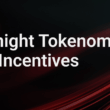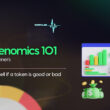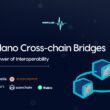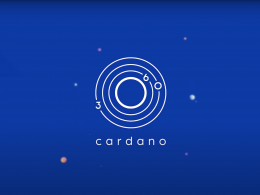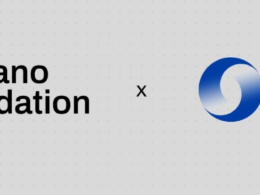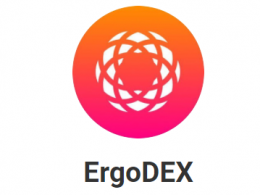Grayscale is a well-known pioneer in cryptocurrency investing. As traditional investors warm to digital assets, the investment services company has long since led the way. Grayscale was an early mover in the crypto space and is the largest crypto asset manager.
More importantly, the firm’s Bitcoin Trust vehicle provides stock market exposure to BTCs explosive YoY returns. The product is popular among firms like Cathie Wood’s ARK Invest, who seek crypto exposure but cannot legally custody the bearer asset. Grayscale also offers exposure to a handful of altcoins like Ethereum through their Ethereum Trust and, more recently, Cardano through their Digital Large Cap Fund.
On the other side of the equation, crypto natives have applauded the company’s forward-thinking products. Crypto influencers often cite the firm’s popularity as evidence of broad investor demand for digital assets. Others highlight CEO Michael Sonnenshein’s recent support for a spot-based bitcoin ETF. Currently, a futures-based ETF is rumored to be nearing approval in the US. However, a spot ETF would provide more direct exposure and is inline with the general ethos of the crypto space. A spot ETF is also suggested to be less vulnerable to manipulation.
An Introduction to Cardano
As a leader in digital asset investing, Grayscale is committed to raising investor awareness. Towards this end, the firm frequently publishes educational reports they refer to as Building Blocks.
These overviews outline the defining characteristics of assets underlying their products. Overall, the reports provide an easy-to-digest analysis of a project’s fundamentals and potential. Recently, Grayscale released a Building Blocks write-up focused on Cardano and the numerous aspects of the project that may pique the interest of investors.
Network Effect and Addressable Market
An Introduction to Cardano begins by highlighting the size of the cloud computing space. With a market capitalization of approximately $2 trillion, the market is estimated to gross over $330 billion annually. Alongside this demand, cryptocurrency networks like Cardano work to establish a global cloud economy as they breathe life into the Web 3.0 ecosystem.
More importantly, Cardano has established an active community of supporters that is growing rapidly. Grayscale’s report notes that Cardano currently has about 2.8 million monthly active users. While Ethereum’s active userbase is 2.5 times this size, its number of active addresses fell significantly over the 2021 summer season. Over the same period, Cardano experienced a significant uptick approaching three million active addresses.
The shift likely has significance. For instance, financial strategists like Raoul Pal and Cathie Wood are quick to underline the importance of a cryptocurrency’s network effect.
Metcalfe’s Law states that the value of a network is proportional to its number of users. Pal’s thread continues espousing Ethereum’s robust YTD network growth.
However, the observation similarly implies that Cardano’s expanding userbase underlies its recent price appreciation. Over the last year, ADA rose 2152.4 percent in market cap from approximately $3 billion to $70 billion as of writing. Grayscale notes how this appreciation has primarily tracked the increase in active users.

As Project Catalyst participants are aware, Cardano is also well-funded. The platform’s treasury holds approximately $1.5 billion in ADA to be allocated towards the ecosystem’s growth. Cardano’s governance system is also rapidly maturing, and voter participation is robust. If the trend holds, Cardano’s roadmap will be strongly supported by an active community as the network transitions into a self-governing DAO.
Transactions and Value Accrual
Grayscale also covered the utility of the Cardano network. According to the report, the Cardano network settled over $1.6 trillion in total on-chain transaction value over the previous year.

As the figure depicts, the total transaction value of bitcoin and Ethereum were significantly higher over the same period. However, Cardano settled more value per unit of market cap.

This utility is also reflected across Cardano’s fee revenues. Over 70 percent of ADA in circulation is currently staked with stake pool operators, and Cardano processes presently over 115,000 daily transactions. This figure marks a 13x increase in 2021 alone, likely spurred by the introduction of NFTs on the blockchain.
As transactions increase across the network, the associated fee revenue paid to stakers is similarly increasing. According to Grayscale, this model makes ADA a productive capital asset.

With smart contracts and dApps around the corner on Cardano, transaction volume and fee revenue may experience another sharp increase.
Competitive Advantages & Potential Risks
Finally, Grayscale summarizes the competitive advantages and potential risks they see in Cardano. The report applauds Cardano founder Charles Hoskinson for his compelling vision that has galvanized an engaged community. Cardano has largely decentralized, and ADA tokens are widely distributed among millions of holders. Moreover, the ecosystem is also well-funded.
That said, the report notes the competitive space that Cardano occupies. The platform’s features are present in other networks, and mainnet applications remain sparse. Furthermore, execution risks remain. Cardano is still rolling out fundamental components, and technical issues may make themselves known in the future.
Regulatory uncertainty is also significant. Ethereum maintains market share, and it has notably been excluded from being classified as a security. Legal headwinds could place Cardano at a severe disadvantage should they materialize.
If you’d like to learn more, check out the full report available from Grayscale. You can also find Grayscale’s other crypto Building Block reports on their website.


